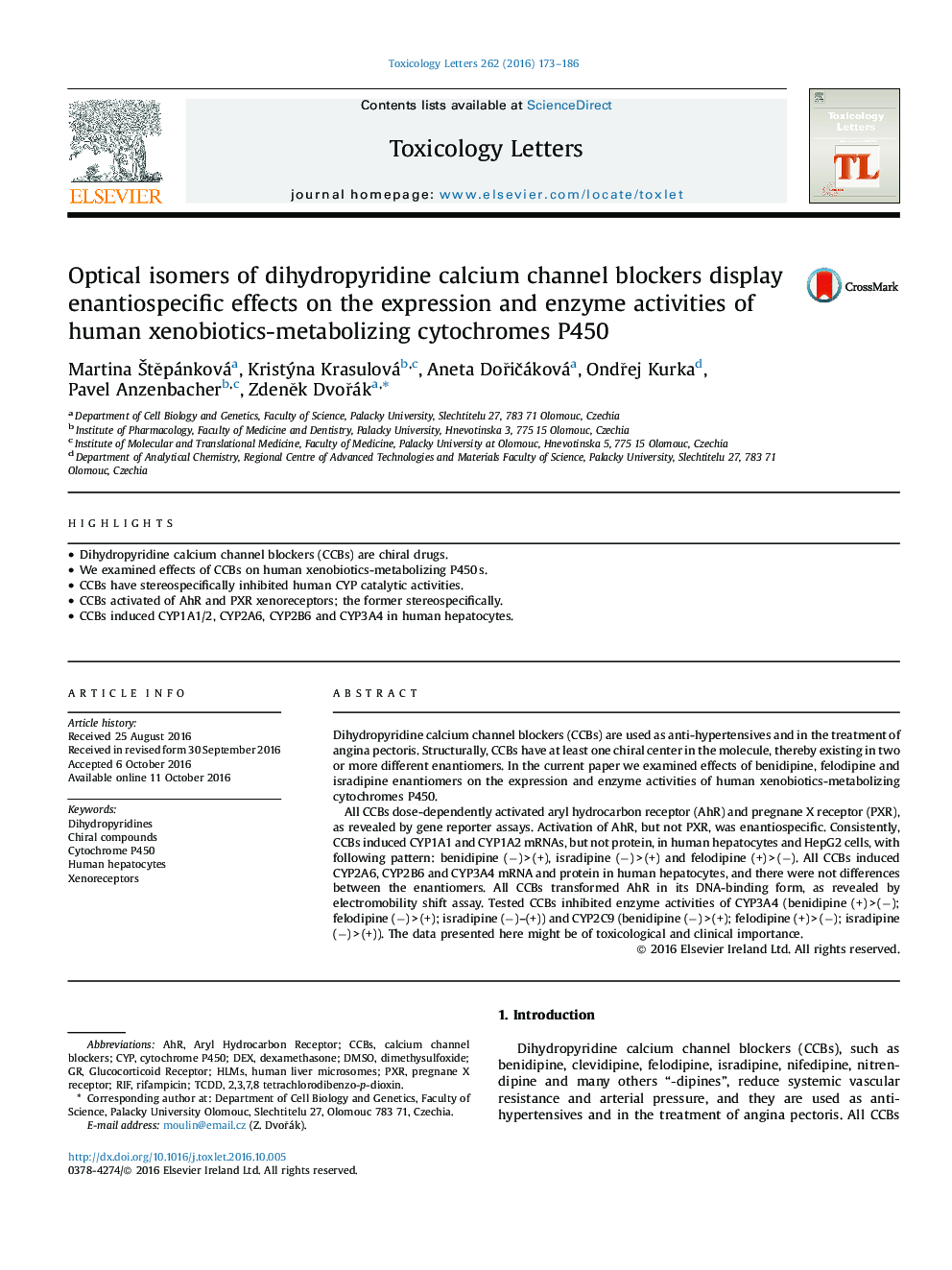| Article ID | Journal | Published Year | Pages | File Type |
|---|---|---|---|---|
| 5562319 | Toxicology Letters | 2016 | 14 Pages |
â¢Dihydropyridine calcium channel blockers (CCBs) are chiral drugs.â¢We examined effects of CCBs on human xenobiotics-metabolizing P450 s.â¢CCBs have stereospecifically inhibited human CYP catalytic activities.â¢CCBs activated of AhR and PXR xenoreceptors; the former stereospecifically.â¢CCBs induced CYP1A1/2, CYP2A6, CYP2B6 and CYP3A4 in human hepatocytes.
Dihydropyridine calcium channel blockers (CCBs) are used as anti-hypertensives and in the treatment of angina pectoris. Structurally, CCBs have at least one chiral center in the molecule, thereby existing in two or more different enantiomers. In the current paper we examined effects of benidipine, felodipine and isradipine enantiomers on the expression and enzyme activities of human xenobiotics-metabolizing cytochromes P450.All CCBs dose-dependently activated aryl hydrocarbon receptor (AhR) and pregnane X receptor (PXR), as revealed by gene reporter assays. Activation of AhR, but not PXR, was enantiospecific. Consistently, CCBs induced CYP1A1 and CYP1A2 mRNAs, but not protein, in human hepatocytes and HepG2 cells, with following pattern: benidipine (â)Â >Â (+), isradipine (â)Â >Â (+) and felodipine (+)Â >Â (â). All CCBs induced CYP2A6, CYP2B6 and CYP3A4 mRNA and protein in human hepatocytes, and there were not differences between the enantiomers. All CCBs transformed AhR in its DNA-binding form, as revealed by electromobility shift assay. Tested CCBs inhibited enzyme activities of CYP3A4 (benidipine (+)Â >Â (â); felodipine (â)Â >Â (+); isradipine (â)-(+)) and CYP2C9 (benidipine (â)Â >Â (+); felodipine (+)Â >Â (â); isradipine (â)Â >Â (+)). The data presented here might be of toxicological and clinical importance.
